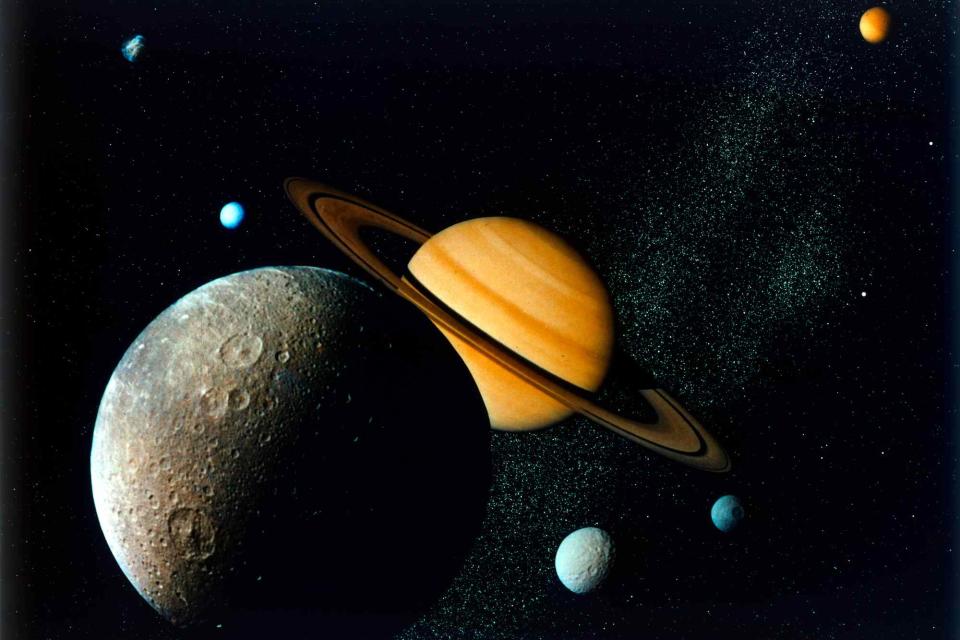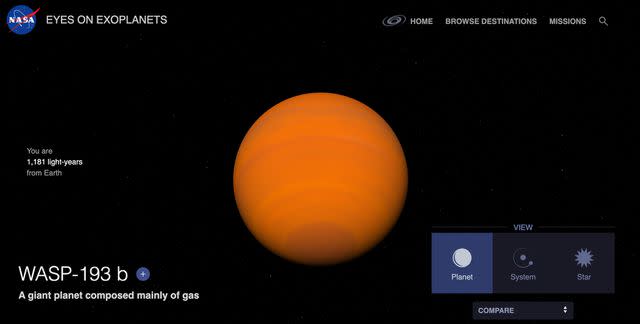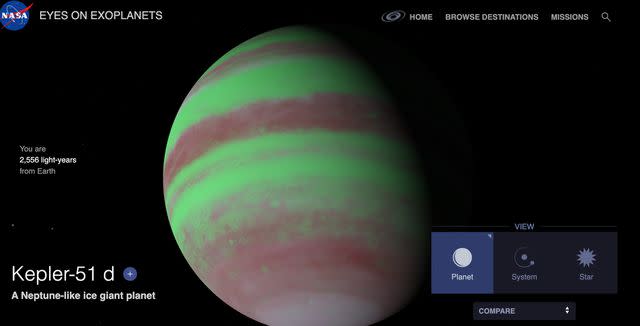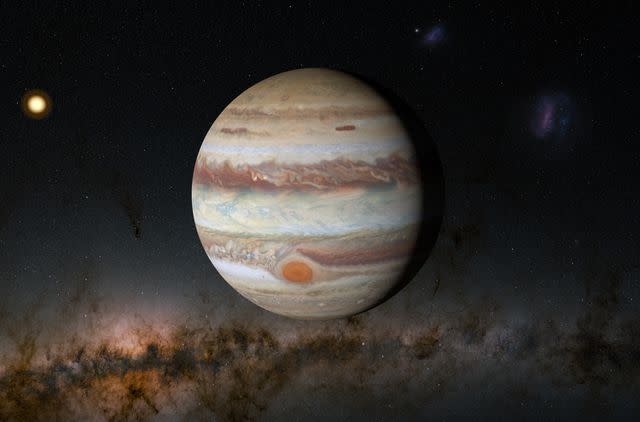Scientists Discover Fluffy Planet, Equate Its Density to Cotton Candy
The discovery is 50% larger than Jupiter but nearly half as dense

Heritage Space/Heritage Images/Getty
Stock image of Saturn and its moonsScientists have discovered a huge planet with the density of cotton candy and is 1,200 light years from Earth.
The newly discovered finding is exoplanet WASP-193b and located outside of our solar system, according to a study published in the journal Nature Astronomy on Tuesday, May 14. NASA reports nothing like it exists in our solar system.
The exoplanet is 50% larger than Jupiter, the largest planet in our solar system. Due to the extremely low density, WASP-193b is an anomaly among the more than 5,000 exoplanets scientists have discovered so far. Additionally, due to its density, it took four years to gather data, per MIT News.

Nasa
WASP-193 BThe only planet that has been discovered as less dense is the Neptune-like plant Kepler-51d, which was discovered 10 years ago.

Nasa
Kepler-51d planetRelated: Unknown Planet May Exist in Our Solar System, Experts Say
“To find these giant objects with such a small density is really, really rare,” says lead study author and MIT postdoc Khalid Barkaoui, per MIT News. “There’s a class of planets called puffy Jupiters, and it’s been a mystery for 15 years now as to what they are. And this is an extreme case of that class.”
WASP-193b is categorized as a "super-puff," a term used by scientists to refer to the unique class of exoplanets with cotton candy-like density. Its density is estimated to be 0.059 grams per cubic centimeter, which is just 0.04 grams per cubic centimeter larger than cotton candy. Jupiter is measured at 0.14, while Earth is at 5.51 grams per cubic centimeter.
Related: James Webb Telescope Finds 'Swirling Clouds' on Planet with 22-Hour Day and 1,500-Degree Temps
It is hypothesized to be comprised mostly of hydrogen and helium, which scientists explain likely formed a hugely inflated atmosphere. Although the gasses inflate the atmosphere, it is still unknown how a planet is able to inflate that much.
"We don't know where to put this planet in all the formation theories we have right now, because it's an outlier of all of them," Francisco Pozuelos, study author and astronomer at the Instituto de Astrofisica de Andalucia, said in a statement. "We cannot explain how this planet was formed."

Getty
Jupiter, illustrationNever miss a story — sign up for PEOPLE's free daily newsletter to stay up-to-date on the best of what PEOPLE has to offer, from celebrity news to compelling human interest stories.
"The planet is so light that it's difficult to think of an analogous, solid-state material," Julien de Wit, MIT professor and study co-author, said in a news release, reports CBS News. "The reason why it's close to cotton candy is because both are pretty much air. The planet is basically super fluffy."
“We were initially getting extremely low densities, which were very difficult to believe in the beginning,” Pozuelos adds. “We repeated the process of all the data analysis several times to make sure this was the real density of the planet because this was super rare.”
For more People news, make sure to sign up for our newsletter!
Read the original article on People.

